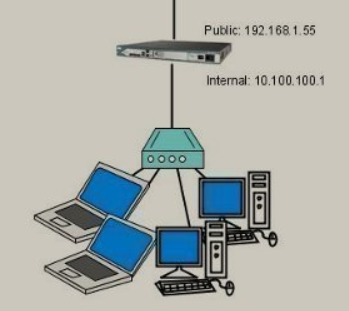Installing and Configuring Networks
Setting up a network is more than installing equipment. You must also understand how devices are identified on the network.

INTERNET PROTOCOL ADDRESSING
Each device on an Internet Protocol (IP) network must have an IP address, and no two devices in a specific network can have the same address.
IPv4
Most networks use the IPv4 addressing scheme. Each number in an IPv4 address is called an octet (an eight-bit byte). There are four octets in an IPv4 address, meaning it is a 32-bit address. The numbers used in an IP address are called dotted decimal, converted from binary to make them easier to read. If all IPv4 devices in the world were in a single network, there could be only 4.3 billion devices total (4.3×10 to the 9th power).
Classes A, B, and C
Originally, IPv4 addresses were divided into three groups for general use, A, B, and C.
In class A, only the first octet is used for networks (net ID), and the second, third, and fourth are used for devices on the network (host ID). Class A addresses run from 0.0.0.0 to 127.255.255.255. The problem with Class A is that only 128 networks are available, but there are more than 16 million hosts (devices) in each network! This is a big imbalance of networks versus hosts.
In class B, the first and second octets are used for net IDs, and the third and fourth octets are used for host IDs. Class B addresses (128.0.0.0 to 191.255.255.255) allow 65,534 hosts and 16,384 networks. Again, this is an imbalance of networks versus hosts.
In class C, the first, second, and third octets are used for net IDs, and the fourth octet is used for host IDs. Class C addresses (192.0.0.0 to 223.255.255.255) allow 254 hosts but more than 2 million networks. A network that needs more hosts must use a class B network in the
A-B-C scheme.
To enable different-sized networks from the defaults, the A-B-C scheme also uses subnet masks along with IP addresses.
By changing the default subnet values shown in Figure 10.1, organizations can change the default number of net IDs and host IDs. For example, take a network starting with 192.168.0.1 that has 254 hosts. For security, you want to create four networks from one and assign each network to a different department.
By changing the subnet mask from its default of 255.255.255.0 to 255.255.255.192, we increase the number of networks to four and reduce the number of hosts per network to 62.
One IP address in each of the new networks is set aside for broadcasting, and one IP address in each of the new networks is the starting address. The /26 at the end of the subnet is how Classless Inter-Domain Routing (CIDR) expresses a
subnet. CIDR enables IP addresses to be assigned in smaller blocks than the traditional A-B-C classes create. In a CIDR IP address, the address uses the same dotted-decimal notation we saw earlier, but with a twist. The four octets are called a prefix, defining the first network address, but instead of a conventional subnet mask, a suffix is used to specify how may bits are in the subnet.



